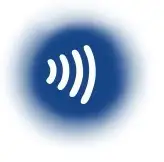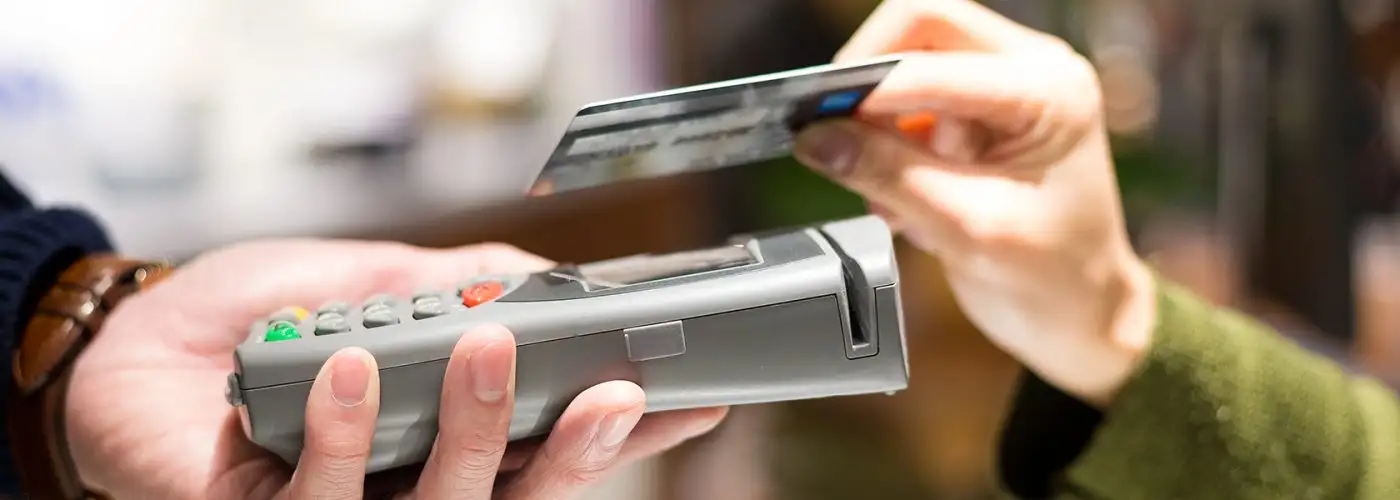Say your bank sent you a credit or debit card with an embedded RFID chip. The idea sounds appealing: When you make a purchase, instead of slipping your card into a reader and waiting for a response, all you do is tap the card on a pad somewhere near the terminal. It’s the same sort of technology that many transit systems use for fare cards, where you just tap and go through the barrier.
RFID functionality isn’t confined just to credit and debit cards. U.S. passports issued after 2007 have RFID chips in the cover. Some smartphones also add RFID capability to their credit card applications: Even if your card doesn’t have RFID, if you enter a card in your phone, it gets RFID.
Lots of travelers are worried about a possible downside to this “convenience.” A crook with the right equipment might read your card as you pass through a check-in or security line without your recognizing it at all. And that read captures all the data the crook needs to make a duplicate card that works the same way as yours.
Do Your Credit Cards Have RFID Chips?
Before you get involved with the problem, you first need to determine whether any of your cards actually has an RFID chip. They are not the same as the visible chips you see on the “chip and signature” or “chip and pin” cards, officially called “EMV” cards, that are quickly becoming the norm here in the U.S. Those chips cannot be read remotely.
Instead, RFID chips are embedded in the plastic and you never see them. The way to determine whether a card has RFID is to check for “Blink,” “PayPass,” or “PayWave” somewhere on the card or if it has this symbol:

Is RFID Technology Safe for Travelers?
So, if you find that at least one of your cards does have an RFID chip, should you worry? As is all too often the case, the answer is a firm, “Maybe.” You hear conflicting reports; the jury is still out:
On most purchases, you not only have to tap the card but also show the card to someone and either sign or enter a pin. Your in-person exposure is limited to vending machines and other situations where you don’t have to verify your identity. But you can make some big-ticket online or phone purchases by just knowing the information on a card.
Security codes in your RFID chip are designed to change each time you use it, so a crook could use a counterfeit card only once. But that once could be a whopper.
The RFID signal from your chip is very weak, so it can be read from only a short distance—the card folks say a few inches. So your information is not at risk unless a crook can pass a reader directly over your purse or wallet. Or until someone develops a reader that works at a distance.
You can at least partially shield your card by wrapping it in metal foil or mesh “Faraday cage” fabric. The State Department adds a shielding layer to passport covers, and it issues Global Entry cards in shielded sleeves. Several outfits sell sleeves and packets designed to block RFID signals from credit and debit cards. But Consumer Reports note that even the best shields don’t block the signals completely, and that shield performance is inconsistent.
Developers are working on a handful of devices that can block RFID, detect attempted reads and sound alarms, or “detune” RFID signals. One example is GarbleCard, a card-shaped device you stack on top of your cards. So far, I’ve seen no independent testing of these new devices.
You don’t have to Google the Internet or search YouTube very far to see videos of successful reads. So far, those videos appear to be limited to reads at only extremely short distances, with nothing like reading from across the room. But that’s just for now, not next year.
The cards folks bolster their security claims by noting the fact that they have received no complaints about contactless theft. Skeptics reply that what they really mean is “not yet.”
The take-away from all this is that, for now, a successful unauthorized read of a card is extremely unlikely. But that’s not the same as “impossible.” If you’re really concerned, a shield for your card(s) will decrease the risk substantially. Or you can leave any RFID cards you have at home.
More from SmarterTravel:
- Beware the New Airport ATM Scam
- The New Credit Card Scam That Preys on Hotel Guests
- The One Lie You Should Always Tell While Traveling
Consumer advocate Ed Perkins has been writing about travel for more than three decades. The founding editor of the Consumer Reports Travel Letter, he continues to inform travelers and fight consumer abuses every day at SmarterTravel.
We hand-pick everything we recommend and select items through testing and reviews. Some products are sent to us free of charge with no incentive to offer a favorable review. We offer our unbiased opinions and do not accept compensation to review products. All items are in stock and prices are accurate at the time of publication. If you buy something through our links, we may earn a commission.
Related
Top Fares From
Today's Top Travel Deals
Brought to you by ShermansTravel
Shop and Save with Country Inns...
Patricia Magaña
 Hotel & Lodging Deals
Hotel & Lodging Deals
$229 -- Chicago: Discounted Rates and...
Francesca Miele
 Hotel & Lodging Deals
$229+
Hotel & Lodging Deals
$229+
$188 -- Honolulu: Save on Oceanview...
Abigail Lamay
 Hotel & Lodging Deals
$188+
Hotel & Lodging Deals
$188+




